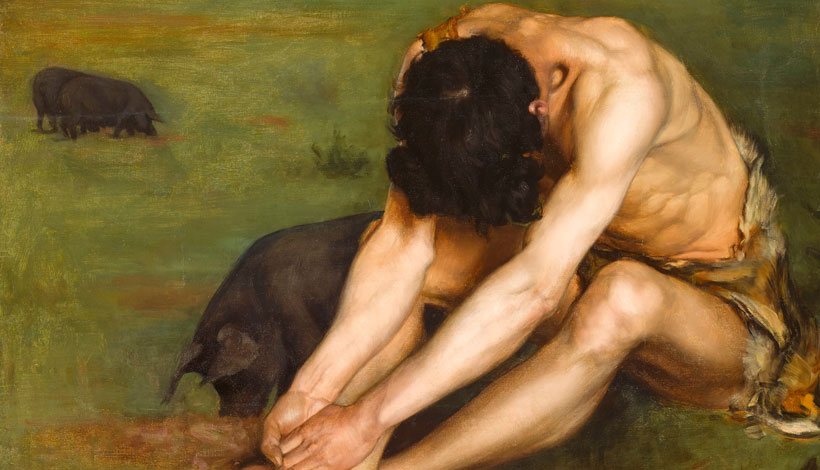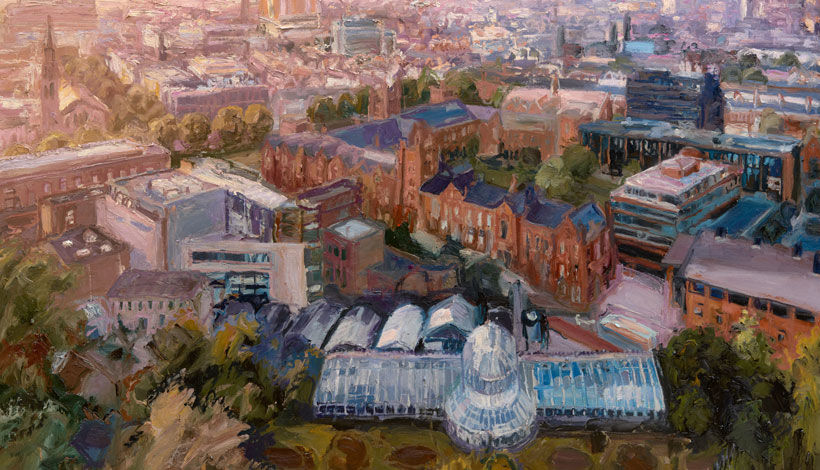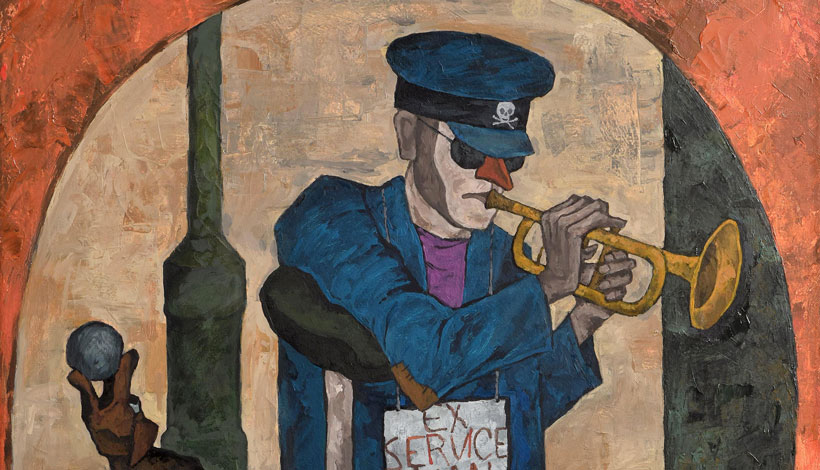
John P O’Sullivan visits artist Eddie Mooney at his Dublin home and studio
The past is never dead. It’s not even past.’ William Faulkner’s well-known line from Requiem for a Nun seems particularly apt in the case of Eddie Mooney’s paintings. Born in 1940, Mooney grew up in a household in north inner-city Dublin, where times were hard. ‘My father was unemployed for a long time. I’ve seen poverty,’ he said. The paintings he has produced throughout his career reflect these bleak early days: poor folk in desolate urban locations, a preponderance of grey, and a sense of suffering and endurance. Hungry birds and fish bones are recurring motifs. They are rare examples in Irish art of the stylised social realism that became fashionable in the UK in the 1950s through artists like Jack Smith and John Bratby. Mooney was also part of a movement that shook up the Irish art establishment in the 1960s, opening doors for those from less-genteel backgrounds. These days his soft voice, his gentle demeanour, his neatly combed grey hair and his dark jacket and trousers are suggestive of a retired priest with a saintly disregard for the things of this world.
To read this article in full, subscribe or buy this edition of the Irish Arts Review
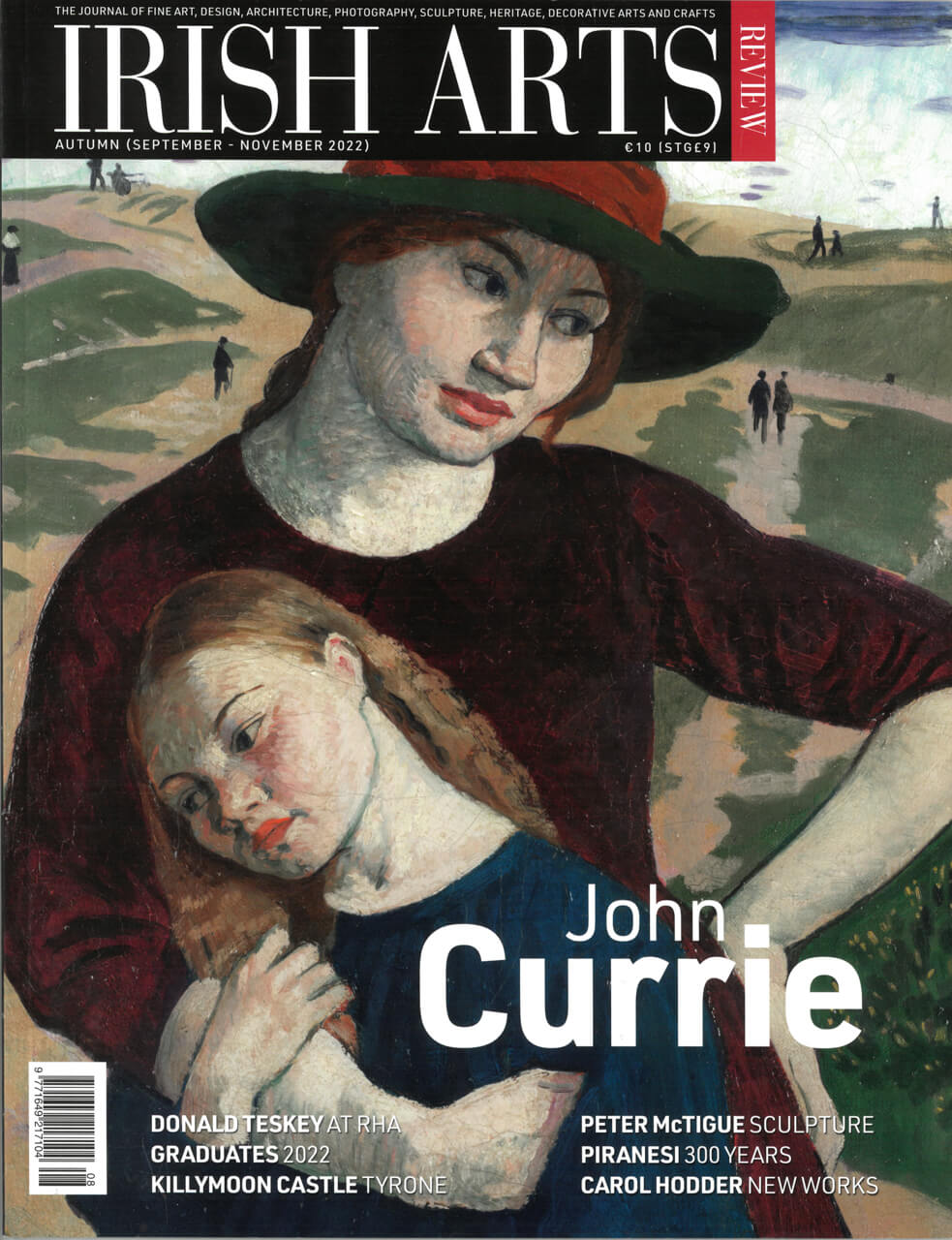
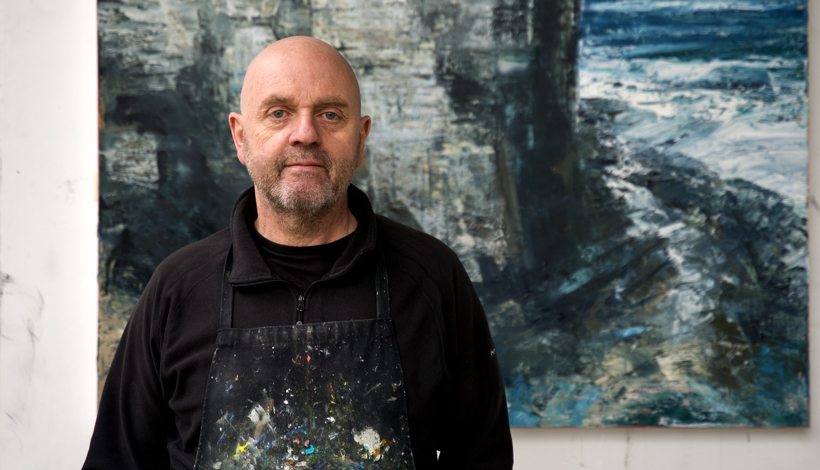
John P O’Sullivan investigates painterly values and pitfalls with Donald Teskey, ahead of his mid-career survey at the RHA
